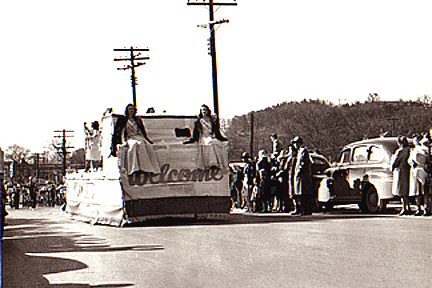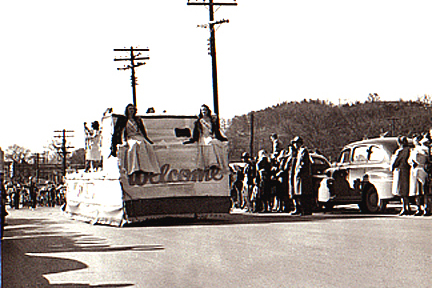Saturday afternoons in the 1950s often meant a trip to downtown Johnson City for a neighborhood buddy, Hagan Reed, and me. We walked east on West Market Street from Johnson Avenue, a distance of about a mile.
The main department stores then were S.H. Kress, McLellans, Woolworths, Charles Stores, Sears Roebuck, Powells, J.C. Penney, Dosser’s, Kings and Parks-Belk. Our first stop was Earl Hicks’ Produce, where my great uncle, Walter Bowman, would offer us a sample of fresh fruit. We initially walked the entire length of Main Street, entering whatever stores suited our fancy. If our shoes needed repair, that necessitated a stop at the Arcade Shoe Shop for a Cat’s Paw heel or sole. The staff gave us a sheet of white paper to rest our stocking feet on while we waited.
Wallace’s Shoe Store had a new x-ray machine used to fit shoes. We inserted our foot into a bottom slot, glanced into the top viewfinder, wiggled our toes and watched the bones in our foot move. Kings Department Store’s attraction was an open-cage elevator ride, traveling from the basement to the fifth floor and back. This excursion, with its creepy looking fully exposed shaft, was as exciting as any carnival ride. The attendant often had to move the elevator up and down to align it with the floor, negating a tripping hazard for customers.
Another stopover was Pat Watson’s Trading Post to exchange some of my dad’s paperback books for comic books. Our choice for lunch was often John’s Sandwich Shop; a couple of dime hot dogs and a nickel coke would send us on our way. Sometimes, we patronized Kress’s food counter, usually consuming a hamburger, French fries and a soft drink for under a half dollar. Before departing, we spent several minutes gazing into their tropical fish tanks.
Henry Frick’s Music Mart and Burgess Smythe’s Electric allowed us to preview some records in one of their enclosed sound booths. The Southern Railroad Depot afforded us the excitement of watching trains being loaded and unloaded. It also included a brief pause at Zimmerman’s News Stand next door. Saturdays were always enhanced by a chance encounter with John Kilby, a comedic person frequently seen in the downtown district. This hilarious old chap was a delight to his many fans.
If we needed a haircut, we could choose between fifteen barbershops within walking distance of Fountain Square. We usually patronized Primus Dees at the Majestic Barber Shop or Boyd Purdy at the Palace Barber Shop, paying 50 cents for a trim, all the while listening to Paul Harvey on the radio. The highlight of the afternoon was watching a movie at the Liberty, Tennessee, Majestic or Sevier Theatre, the first two establishments being our favorites.
Before trekking home, we stopped at Market Street Drug Store to purchase any needed three-cent stamps or penny post cards from their small post office in the back. Our final digression was the Red Shield Boy's Club for some brief recreational activity, accompanied by a free bottle of Pepsi.
Today, I cannot drive downtown and walk the streets without thinking of those simple carefree days of yesteryear when our parents, without worry, permitted two pre-teenage boys to enjoy an entire Saturday in the heart of Johnson City.




